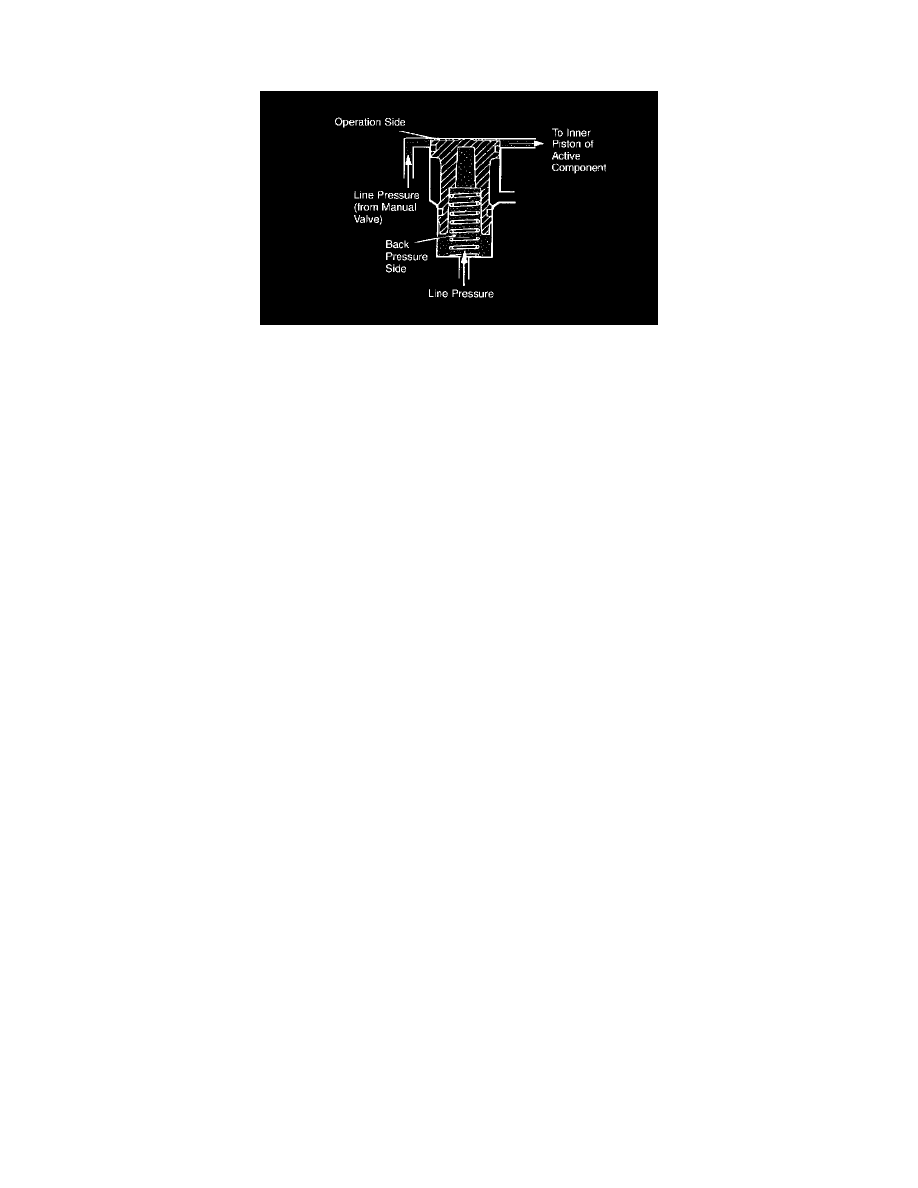Sportage 4WD 2Dr L4-2.0L (2002)

Accumulator: Description and Operation
Accumulators
The primary function of an accumulator is to soften the application of clutches during transmission upshifts (to reduce shock). This transmission
employs three accumulators: Forward Clutch, Direct Clutch and Second Brake. Although there are minor differences between these accumulators,
their basic operation is the same.
Accumulators consist of a spring and valve. The back pressure side has line pressure applied to it constantly. This line pressure, coupled with spring
tension, keeps the valve fully seated when not being used.
When line pressure is applied to a clutch or brake, it is also applied to the operational side of its accompanying accumulator. The accumulator's valve
is forced downward against line pressure and spring tension. Through this action, the reaction time of the clutch being applied is increased, thereby
softening its application.
Eventually, the accumulator cavity fills, opening the valve. At this point, the clutch or brake becomes fully applied. The time taken to fill the
accumulator cavity acts to soften the application of the clutches during upshifts, which in turn lessen "shift shock".
